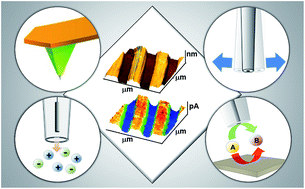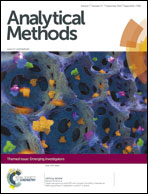Combined electrochemical-topographical imaging: a critical review
Abstract
The ability to characterise electrochemical interfaces on a localised scale has revolutionised our understanding of spatially heterogeneous surface processes. Advances in scanning electrochemical microscopy (SECM) over the past decade have not only permitted access to information at progressively smaller scales but have moreover enabled the simultaneous imaging of interfacial activity and surface topography. Such measurements play a key role in developing a better grasp of structure–activity relationships relevant to a wide range of applications in chemistry and biology. This review critically analyses the state-of-the-art in correlative electrochemical-topographical imaging, focusing on four predominant approaches to probe positional feedback: atomic force microscopy (AFM); shear–force; ion conductance; and electrochemical positioning. The relative advantages and disadvantages of each of these techniques is considered and their imaging characteristics critically compared, with a perspective on the potential for future improvement.

- This article is part of the themed collection: Emerging Investigators

 Please wait while we load your content...
Please wait while we load your content...